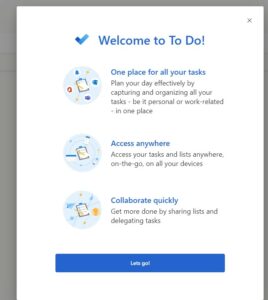
Remote work comes with a lot of perks that office workers don’t usually have. You spend much less money and time on things such as the commute to the office, the clothes you wear, and the food that you while out of your home. You also get to attend meetings and do your work while sitting in your comfy chair and in your PJs.
One of the biggest is finding the drive and consistency to learn how to force yourself to work so that you can continue to perform as well, if not better than when you’re in a formal office setting.
As fellow Remote Filipino Workers, here are some tips on how to force yourself to work when you can’t find the drive to move forward based on the common reasons why people find it hard to force themselves to work.
Table of Contents
1. Try to Get a Grasp of the Bigger Picture

Lack of motivation brought by not having a sense of purpose in daily tasks is a common reason why people find it hard to force themselves to work.
Understanding the bigger picture is incredibly valuable for you in tackling problems or boosting your productivity because it helps you to see how your current tasks and actions contribute to your overall goals and where you want to get to in the future.
This deeper understanding will help you remain centered in the things that you do so that you can find fulfillment in your work, even in the more menial tasks.
Understand that 90% of life is really just doing menial and ordinary stuff. It’s boring, tedious, and not Instagram-worthy. Regardless, they’re important building blocks in the grand scheme of things.
2. Breakdown Your Goals into Achievable Objectives

Define Specific, Measurable, Achievable, Relevant, and Time-bound (S.M.A.R.T.) goals that provide a sense of purpose and direction for you.
As a starter, you can try the Two-Minute Rule. If a task takes less than 2 minutes to finish, do it immediately. It helps you tackle small tasks right away so that they don’t end up becoming a big pile of mental clutter in the long run.
Related to the first point, it’s important that you break down complicated or long tasks and goals into more digestible and manageable goals. Building a thriving business or career from scratch takes years or decades of hard work, consistency, and persistence. Empires aren’t built overnight.
Tackle each problem one at a time and celebrate even your small victories so that you don’t get burnt out.
3. No Matter How Daunting, Start with 5 Minutes (5-Min Rule)

This is a simple technique or hack if you will. No matter how complex or daunting a task may sound, just work on it for 5 minutes. The idea is that getting started is often the hardest part. Once you’ve climbed over that hill, the rest should be a bit easier.
The reason is that we are often are biggest enemies for productivity. We tend to overestimate how hard things become, and it paralyzes us from moving forward. The 5-minute rule gives you your initial momentum to overcome that problem so that you can get the ball rolling.
Once you’ve found your stride and if you find yourself needing a bit more time so that you can accomplish even more work, you can try our next recommended method, the “Pomodoro Method” (5-minute rule v 1.1)
4. Use Productivity Tools
There are several productivity tools that can aid get you out of your rut. The Pomodoro method is an effective short-term method that provides almost instant results.

Pomodoro Method ('5-Minute Rule v1.1')
The Pomodoro Technique involves breaking work into focused intervals, typically 25 minutes long, called “Pomodoros,” followed by short breaks of 5 minutes. After completing four Pomodoros, a longer break of around 15-30 minutes is taken.
One of its greatest merits is that it takes minimal effort. You’re not forced to commit more than 25 minutes of your time to get started and you can see the results almost instantly. It works a lot like the 5-There are a bunch of Pomodoro Session videos on Youtube that have ambient music and a timer to improve your concentration.
Here are just some of the other benefits of using the Pomodoro technique.
Enhanced focus: By working in shorter, concentrated bursts, the Pomodoro Technique helps improve focus and concentration. Knowing that you have a set time to work intensively can help combat distractions and keep you engaged in the task at hand.
Reduced burnout risk: The structured breaks incorporated in the technique allow for regular rest and recovery, preventing continuous work without breaks, which can contribute to burnout. Taking short breaks helps refresh your mind, reduce mental fatigue, and restore your energy levels.
Manageable work increments: Breaking work into 25-minute intervals makes tasks feel more manageable, especially when experiencing burnout. It creates a sense of accomplishment as you complete each Pomodoro, which can boost motivation and alleviate feelings of being overwhelmed.
Time awareness: The Pomodoro Technique increases awareness of how you spend your time. By tracking the number of Pomodoros completed, you gain insights into how long tasks take, allowing for better planning and estimation in the future.
Improved time management: The technique encourages you to prioritize tasks within each Pomodoro, focusing on the most important and urgent ones first. This helps you make better use of your time and tackle high-priority tasks effectively.
Preventing overexertion: Burnout often results from prolonged periods of continuous work without breaks or boundaries. The Pomodoro Technique promotes a balanced work-rest rhythm, preventing overexertion and giving your mind and body regular intervals of relief.
Increased productivity: The structured nature of the Pomodoro Technique promotes productivity by instilling a sense of urgency and creating a rhythm of focused work. By breaking work into smaller intervals, you can maintain a steady pace and sustain productivity throughout the day.
Time Blocking Technique
This technique involves scheduling ‘blocks’ of your time for your tasks. By organizing your time through these blocks, you create order and structure so that you have enough time for both work and breaks.
It’s a great way of creating barriers so that you still have your personal space and time even if you mostly work from home.
You can incorporate your Pomodoro sessions into these time blocks for a more streamlined process where you can easily separate work from play.
Task Management Apps
There are lots of available apps and tools you can download for free to help organize your day and your to-dos.
- Microsoft To Do – As the name suggests, this is an organizable to-do task list that you can use to easily keep track of and prioritize your daily work. It’s completely free and only requires you to sign up. If you’re already using Windows, then you’ll already likely have an account that you can use. The interface is simple and doesn’t really need any tutorials for you to understand.

- Hive – Available on your phone, desktop, and on browsers, Hive is a platform that helps you improve your overall work ethic. It lets you view your projects in various ways so that have a better grasp and understanding of how you should tackle your day. It has many other features that helps boost productivity.

Productivity Apps
Not to be confused with task management apps, these productivity apps are programs, websites, and tools that actually help you do the actual work. These are great options if you find yourself in a rut or if you feel overwhelmed by the amount of tasks you have to get done.
- Chatgpt and a multitude of other AI programs on the web are there to help you with your work. They can be used as your research assistant, your general playbook of strategies, an auto-corrector of your grammar, a paraphraser for your emails, and even a sounding board when you’re out of ideas. Just be sure to be responsible and ethical in how you use AI to expedite your work.
- Grammarly – It’s a simple web browser plugin that acts much like the grammar checker found in MS Word. It catches your grammatical errors for you so that you always sound professional to whomever you’re talking to. The premium version has a paraphrasing feature that recommends reworded versions of what you have written.
5. Transform Distractions into Productivity Aids

The beauty of working from home or any remote place is that you have all the freedom in the world to manage your work however you see fit. On the downside, you are bombarded by distractions in all shapes and forms. Netflix, your comfy bed, gaming, your kids, background noise, and household chores are some of the constants that will throw you off your concentration.
For most people, eliminating these distractions is what helps them become more productive. If that isn’t an option for you, you can try and use them as tools to be more productive
- Distractions as incentives – if gaming, watching shows, and other fun stuff are what’s keeping you away from work, use them as incentives to work even harder during your home office hours. You could incorporate mid-work breaks through techniques such as the “Pomodoro technique” discussed earlier. Use these fun times and distractions as a reward for the small achievements throughout your work process.
Check out our recommended best games to play while working if you’re a gamer who’s looking into casual gaming in between working sessions.
- Use low-attention distractions as a means to focus – depending on the person, background noises, the sound of a light Sitcom, podcasts, and music can help them focus on their tasks. This can work especially well when the task you’re doing doesn’t need too much brainpower but takes a lot of will to accomplish. Distracting yourself from the drudgery of menial tasks can help you power through your day.
As a reference, here are some of the best anime to watch in the background while working at home.
6. Have a Change in Scenery & Pace

Our daily habits can be our greatest ally and our biggest threats on our road toward productivity. They set the pace and tone of how we conduct our daily tasks, but sometimes, doing the same things in the exact order can magnify the boredom and monotony of work, especially for menial and unfulfilling tasks.
- Go outside and touch some grass, literally. Being in a new environment can provide a fresh perspective and break the monotony. It stimulates your senses and helps you see things from a different angle.
- Move to a different location to eliminate your common distractions. If you’ve been struggling to concentrate in your usual environment, switching to a different setting can eliminate distractions, reduce the triggers associated with your primary workspace, and create a more conducive atmosphere for deep work.
- A change in location can be a great emotional and mental break. It allows you to step away momentarily from the stressors and routines of your regular environment, giving you a chance to recharge and rejuvenate.
7. Learn to Forgive Yourself

Failures are an inevitable part of life. Repeated encounters with failure can lead to the gradual emergence of self-doubt, diminished self-esteem, and burnout which can hinder you from moving forward.
Learning from our mistakes is important, but what really counts is our ability to bounce back and pick up the pieces, moving forward with resilience and determination.
Forgiving yourself enables you to learn from your mistakes and grow as a person. It acknowledges that making errors is a natural part of being human and provides you with an opportunity to reflect, gain insights, and make positive changes instead of dwelling on the past.
8. Get External Help

Self-help will only get you so far. We remote workers tend to become isolated from society for a great part of our days. It definitely affects our mental health and our capacity to stick to the daily grind.
Be sure to seek help whenever necessary. Call a loved one, a neighbor, or a long-time friend.
Find peers who share the same struggles as you. You’ll find that talking to them will help refresh your mindset so that you can find the strength to continue. If you don’t have support groups at home or within your personal networks, we recommend checking out Reddit and Facebook groups for places to connect with other remote workers. For you Remote Filipino Workers out there, you can visit r/buhaydigital on Reddit. It has over 60K members as of writing this post
Seek solace in Religion. Some people find strength in their peers, while for others, Religion is a very good place to draw stamina when going through the rigors of life, including a lonely remote workstyle that’s often secluded from the rest of society.
Find a therapist or a coach (Professional help). These trained professionals guide you to finding the underlying issues that may impact your work so that they can be properly addressed.
Remember, it’s not a shame to look for help. It can greatly aid you with your productivity, and more importantly your mental health and relationship with the people around you.
“Don’t be afraid to ask questions. Don’t be afraid to ask for help when you need it. I do that every day. Asking for help isn’t a sign of weakness, it’s a sign of strength. It shows you have the courage to admit when you don’t know something, and to learn something new..”
-Barrack Obama




